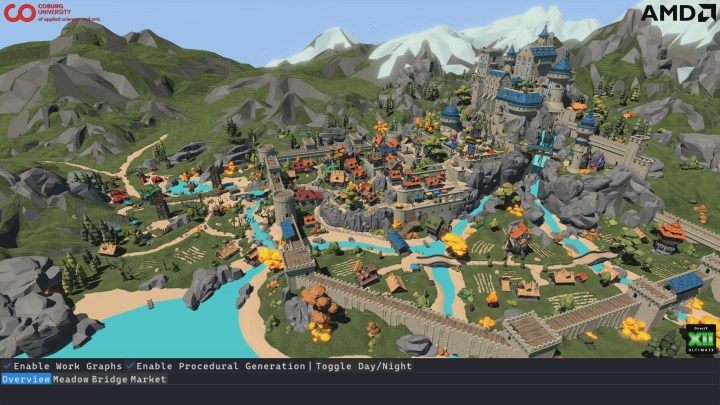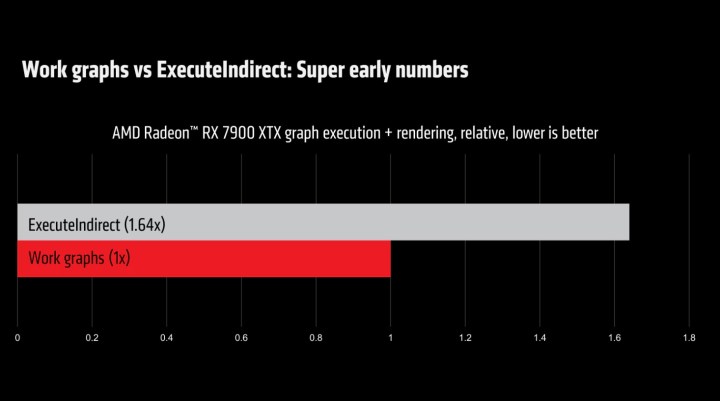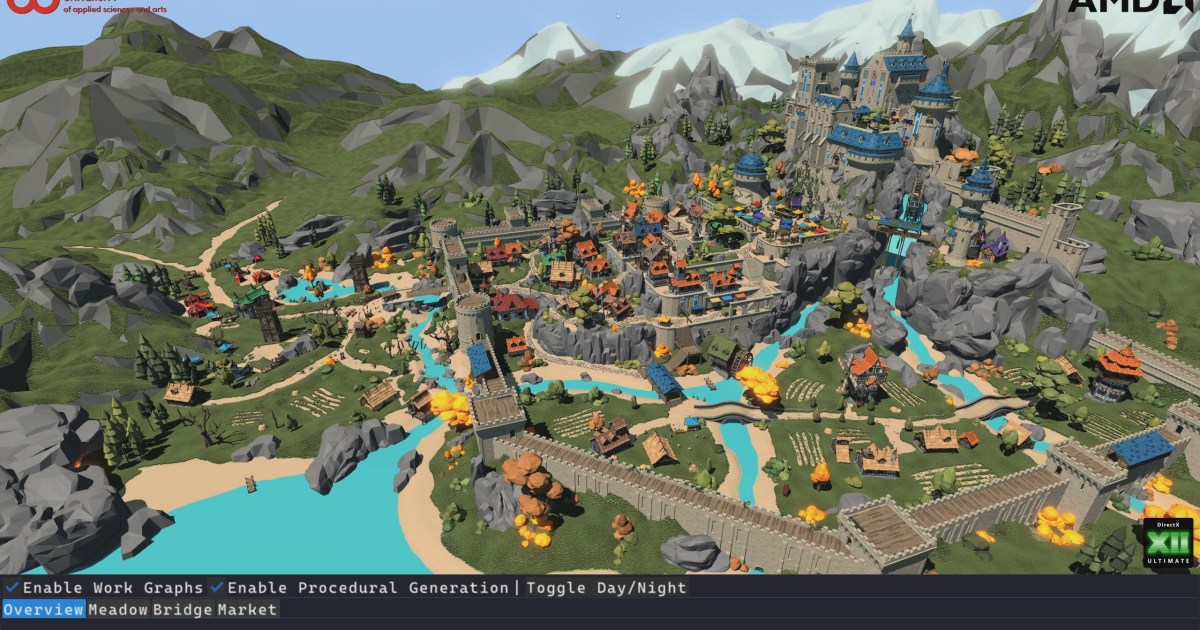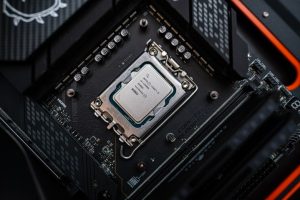
At GDC 2024, AMD simply expanded on Microsoft’s just lately introduced Work Graphs API, and a fast demo reveals simply how highly effective the brand new tech will be for gaming efficiency. AMD’s iteration strikes draw calls and mesh nodes from the CPU to the GPU, slicing again on the time it takes to execute these duties. Because of this, AMD discovered that there was a large efficiency enchancment — rendering time noticed a 64% enhance — when utilizing Work Graphs with mesh shaders.
Microsoft launched Work Graphs as a solution to streamline processes each in gaming and in productiveness, all by giving the GPU the facility to schedule and execute duties with out first speaking with the CPU. It’s constructed into the Direct3D 12 API and it might probably scale back bottlenecks and enhance gaming efficiency in 3D video games.
The addition of mesh nodes is a solution to simplify rendering advanced shapes and scenes by the usage of mesh shaders. Primarily, this could restrict switching between rendering duties, streamlining the method and bettering effectivity. Draw calls, however, confer with requests despatched to the GPU to render graphics, and processing them individually may have an effect on efficiency.
“Mesh nodes lengthen work graphs by introducing a brand new type of leaf node that drives a mesh shader, and which permits a traditional graphics PSO to be referenced from the work graph. […] Full PSO altering can now be performed as properly! The characteristic is named mesh nodes, because it permits a piece graph to feed instantly right into a mesh shader, turning the work graph itself into an amplification shader on steroids,” Matthäus Chajdas, AMD architect, writes within the AMD GPUOpen blog post, referring to the PSO (Pipeline State Objects) all through the graphics pipeline.

To showcase the enhancements, AMD was in a position to share some “tremendous early numbers” that examine utilizing Work Graphs versus Execute Oblique when utilizing an RX 7900 XTX. Execute Oblique is a characteristic in trendy graphic APIs, reminiscent of DirectX 12 and Vulkan, that permits the GPU to carry out draw or dispatch instructions — basically, it’s one other factor that lets the GPU deal with among the CPU workloads as an alternative of speaking with it for each process.
In that early benchmark, AMD discovered that Execute Oblique is as much as 39% slower (1.64x) than Work Graphs with the mesh nodes extension.
AMD additionally shared a demo ready by the workforce at Coburg College in Germany that showcases the characteristic in real-time in a 3D recreation situation.
It’s onerous to foretell the influence of Work Graphs, in addition to AMD’s additions to the brand new characteristic. Nonetheless, it looks like it’ll be a great way for the GPU to shoulder the brunt of the work in gaming eventualities, eradicating CPU bottlenecks and supporting programs with weaker processors. Simply for example, AMD used a Ryzen 7 5800X CPU in its testing, and this proves that these older chips might profit probably the most.
Editors’ Suggestions




